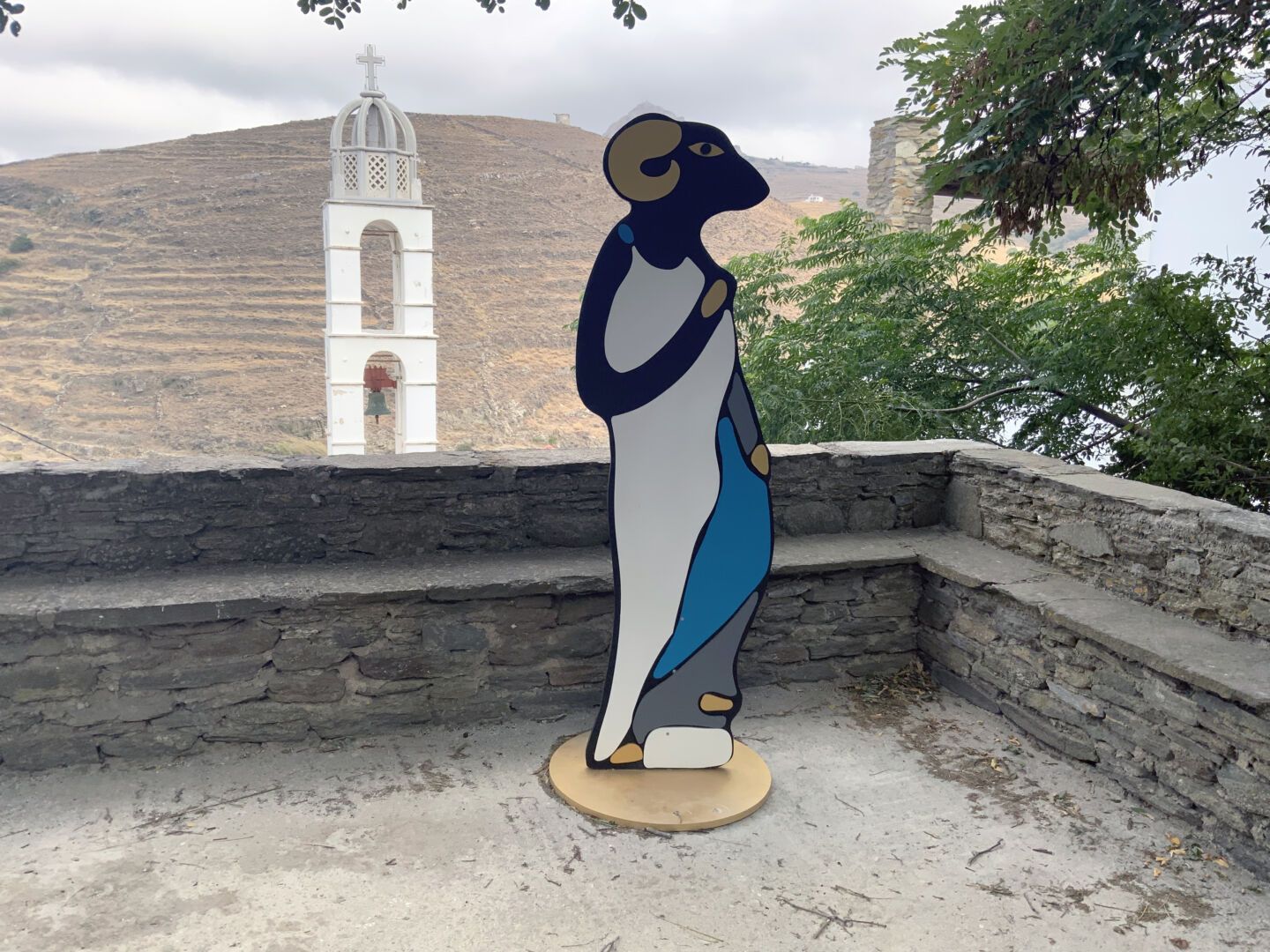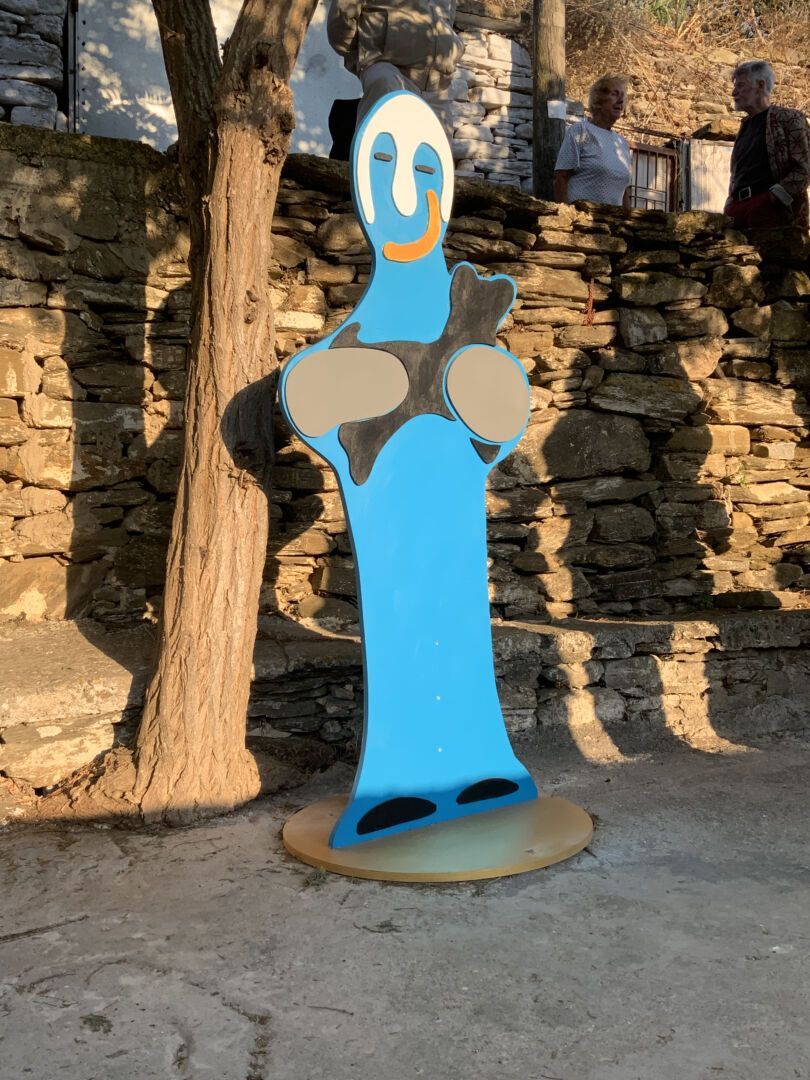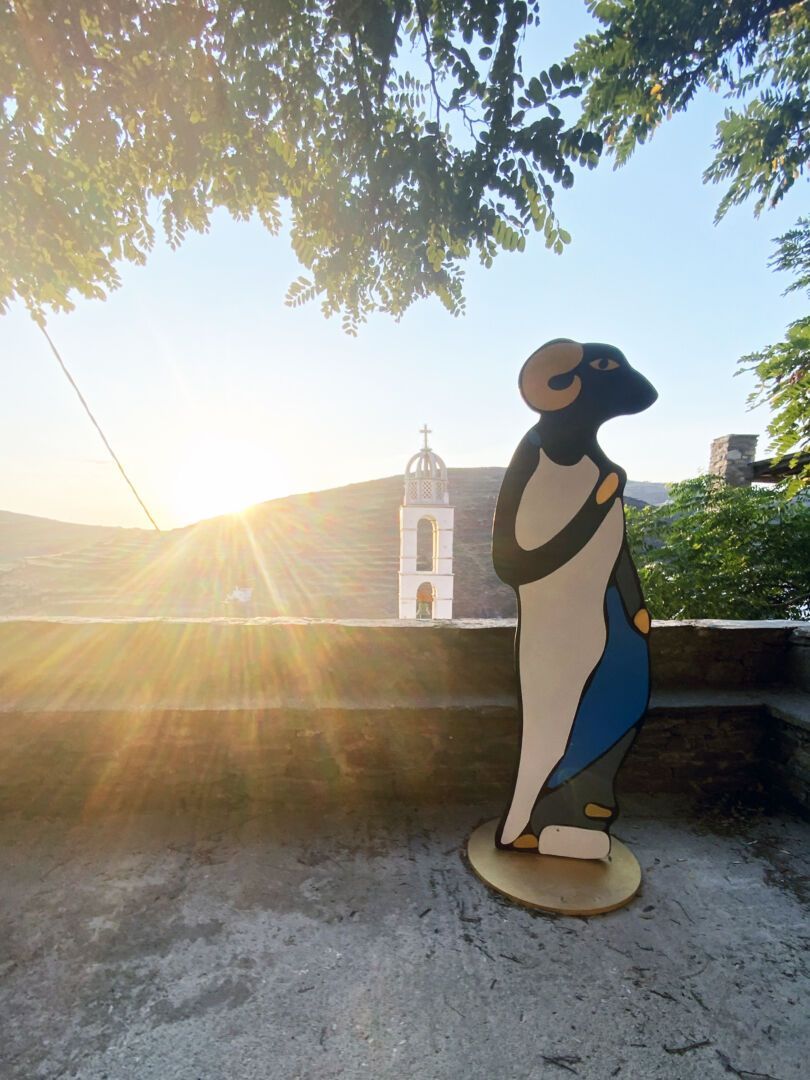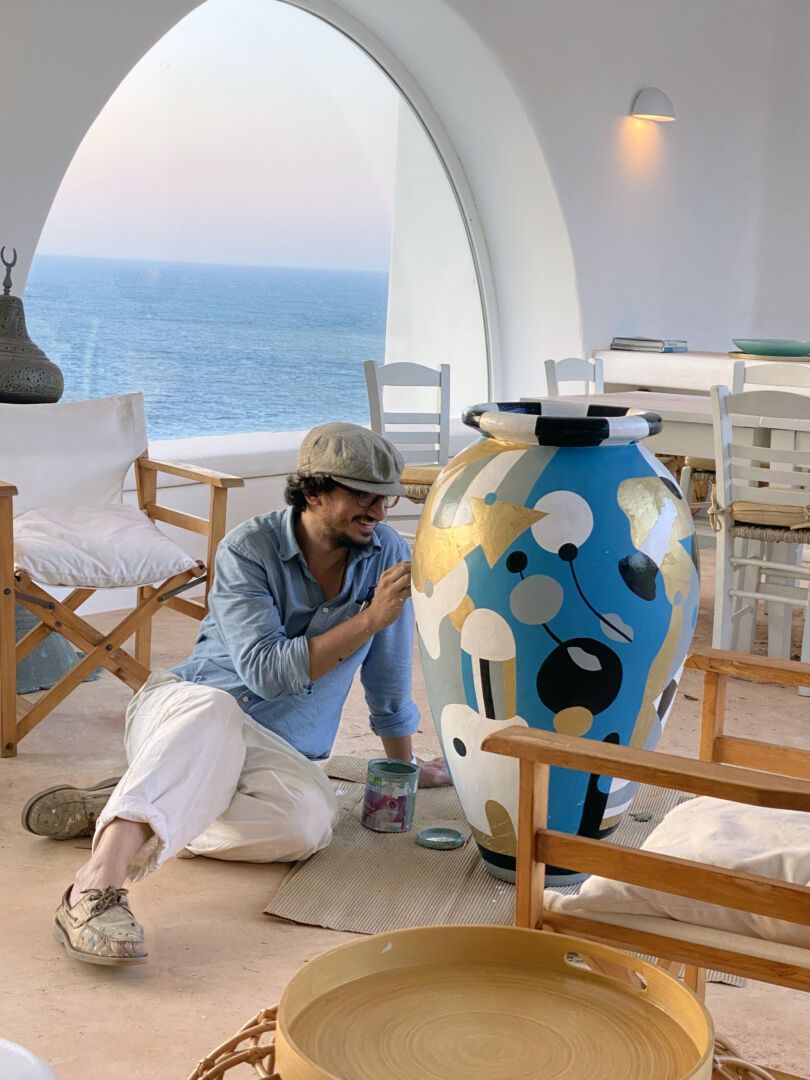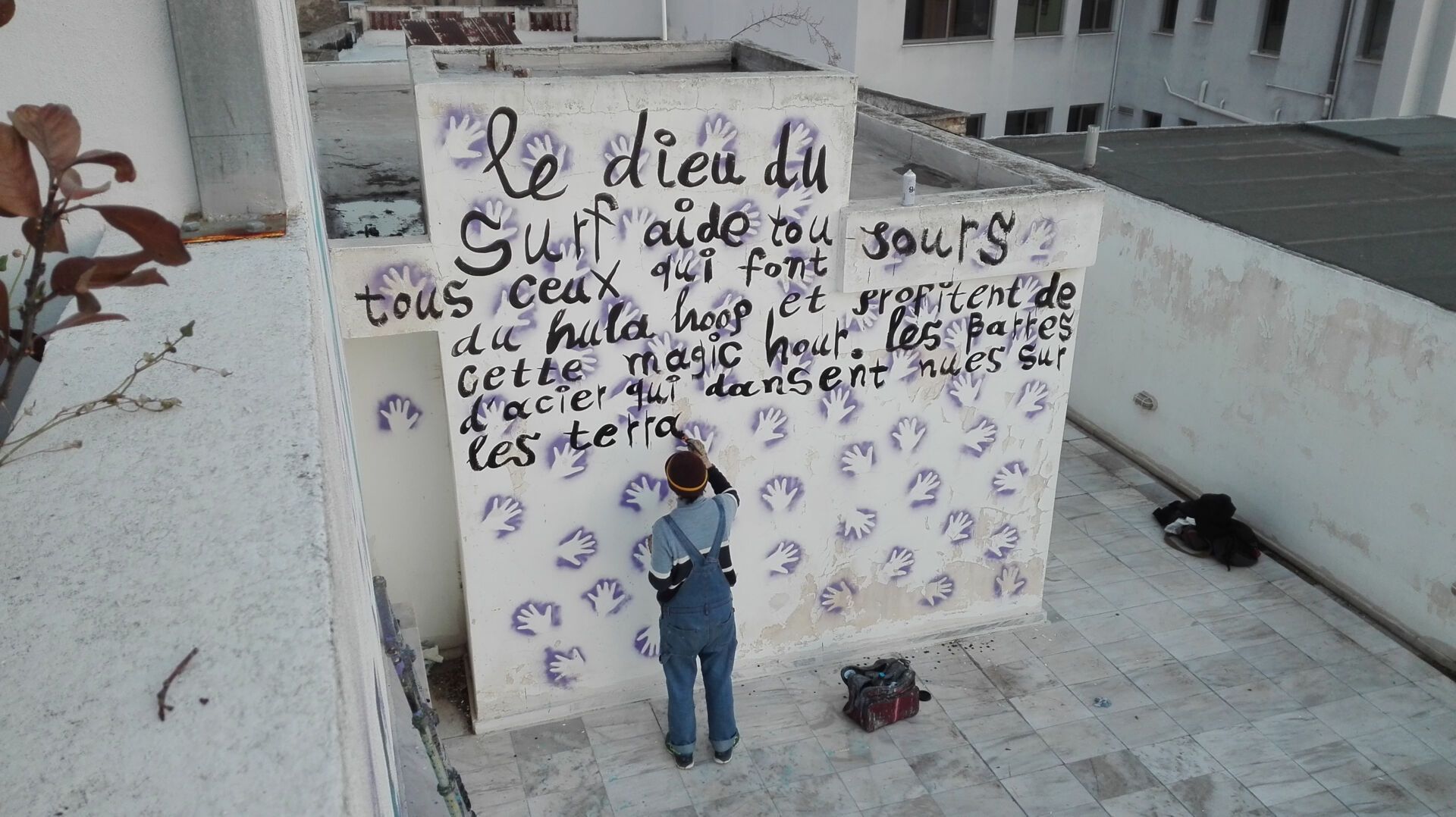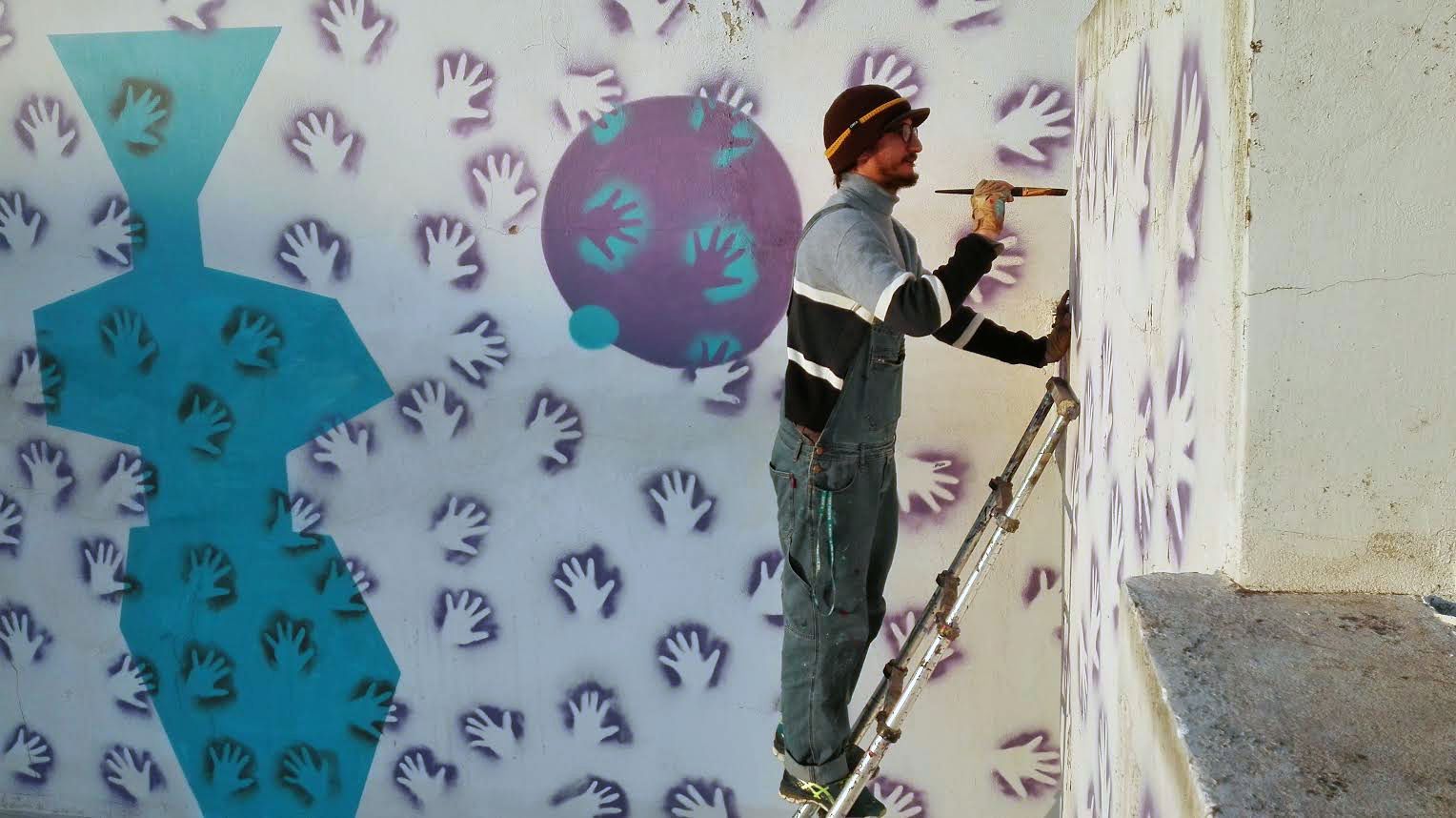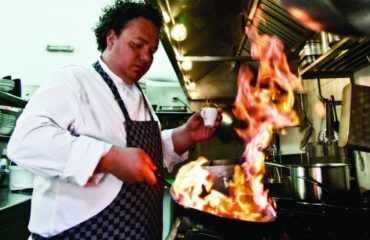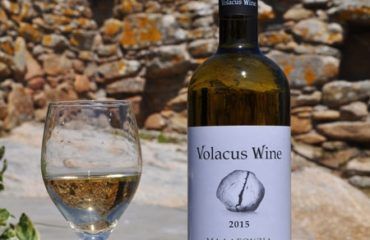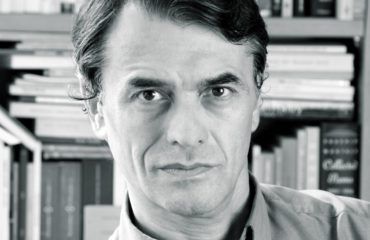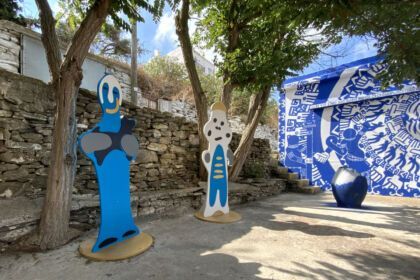
Son of the sculptor George Megoulas, he followed the “street art” as he characterizes it by making the… revolution of his generation, using an unintelligible nickname, Cacao Rocks.
Coming from almost all over Greece on his father’s side and France, on his mother’s, he found himself in Tinos, loved it, was inspired by it and now calls it “our island”. Jason Megoulas spoke to “Tinos About” about his relationship with the island of Tinos, how and if he is connected with the island of Panagia, which he now considers “his”.
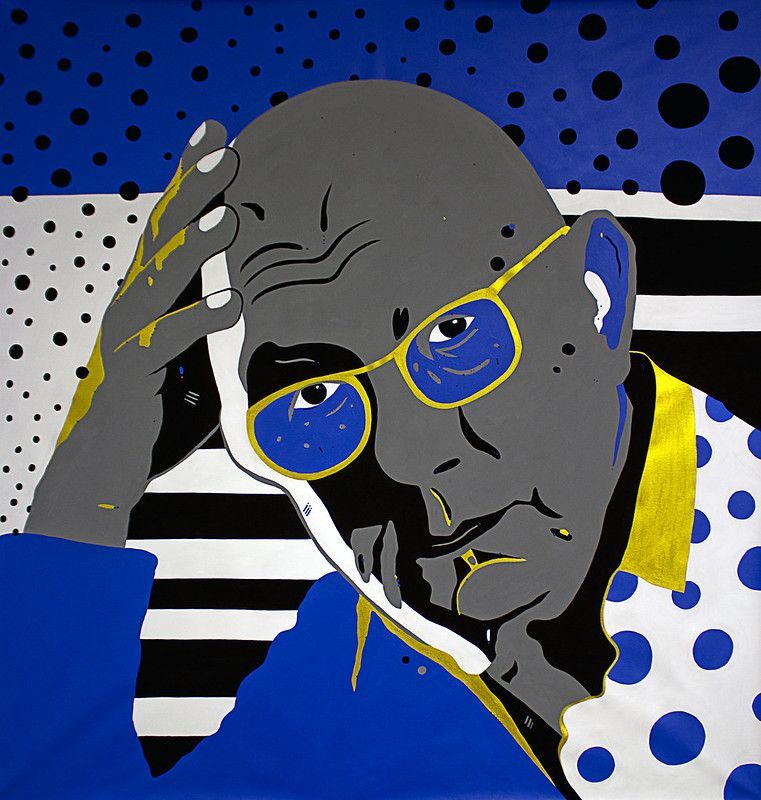
How did your involvement with graffiti begin? Have you done special studies or just practiced the art of painting on the street?
“I have been active in art in the public space since I was a child and my father the same. I am the son of the sculptor George Megoulas who has done dozens of projects in public places and from a young age I have been helping him in his workshop. In adolescence I got involved with street art as a reaction to the older generation.”
Where does Cacao Rocks come from?
My nickname was and still is Cacao Rocks, it doesn’t mean anything, I just followed the current of my generation, which wanted us to present ourselves with unintelligible names … Now I prefer my real name “Jason Megoulas”.

What is it that connects you with Tinos?
“My last name may be Tinian but the root of my family is lost in time and I cannot clearly clarify my origins. I have no relatives or ancestors that I know about from the island. My father is born in Evia. My mother is from France and grew up in Paris.
In the past, my mother had told me that Tsarouchis and Mercouri had talked to her about an actress named Megoula at the beginning of the previous century and I have the intuition that maybe with her I am distantly related and maybe her origins are from Tinos.
The poet Yannis Ritsos, with whom she had a friendship, had told her about a male actor of the Royal theatre, Nikos Megoulas, but I cannot substantiate any affinity with him, as his last name is written with two “gg” and mine with “gk”.
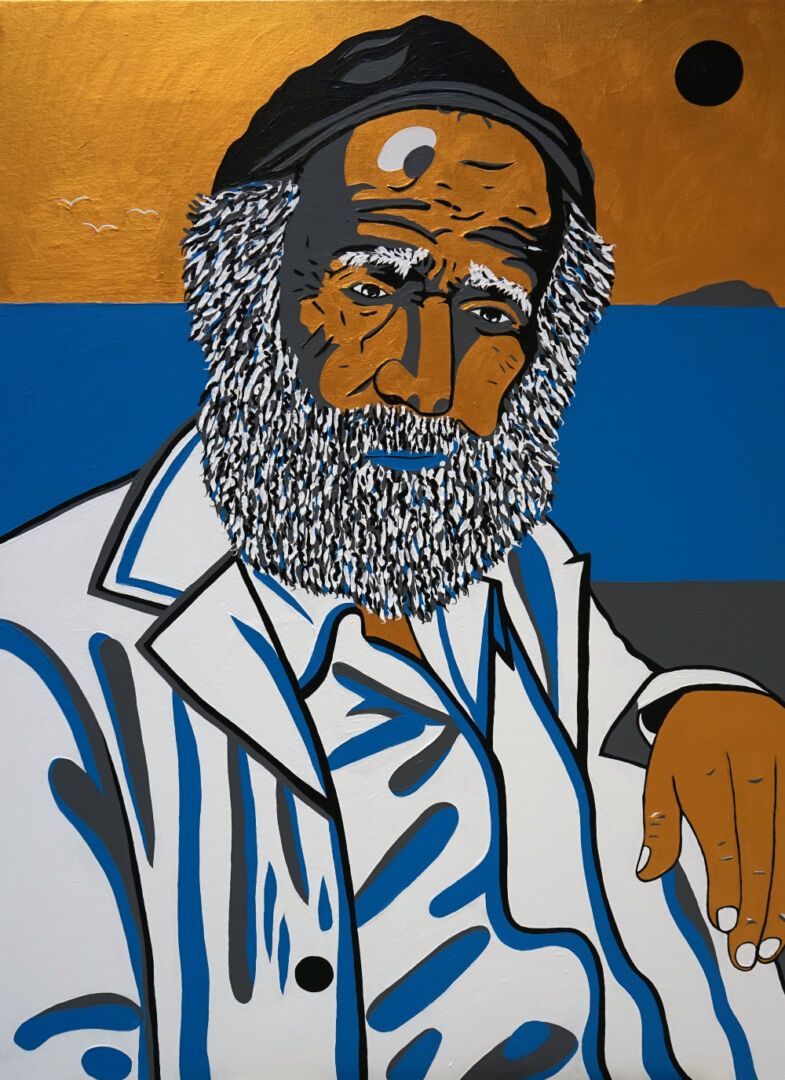
When were you on the island for the first time?
“I visited Tinos for the first time in 2016 after my solo exhibition in Mykonos, as something different. The occasion was the exhibition of my friend and photographer Denia Panagaki that she would have in Pyrgos and was entitled “The Women of Tinos”. The following year I met the art historian Manos Stefanidis who is also a “lover” of Tinos, with whom we became friends and urged me to make a mural at the port of Chora.
And here comes Jason Megoulas’ participation in the 2021 Biennale…
“In the summer of 2021 I was lucky enough to take part in the Biennale of Mountados village in Tinos. I was invited by the curator of the exhibition Mireille Lienard. This biennale has in the past been attended by renowned colleagues from abroad who I happen to admire, such as Jules Atlas from France and Koor, from the USA. This time I had the good luck to participate with my colleague, Frenchman Theo Haggai where our works co-existed in the same place and we also did a performance on the day of the opening of the exhibition with a small, but warm crowd of people watching.
My work was a composition of three wood carvings which I had built the previous winter and they represent three prehistoric figurines that had been found in the region of Arcadia and specifically in the Temple of Lykosoura. The process of their creation has been filmed and will be screened in a documentary about the Greek mysteries. In its installation I was helped by the sons of the priest of the village, Father Nicholas, George and Michael, with a kindness from another era.
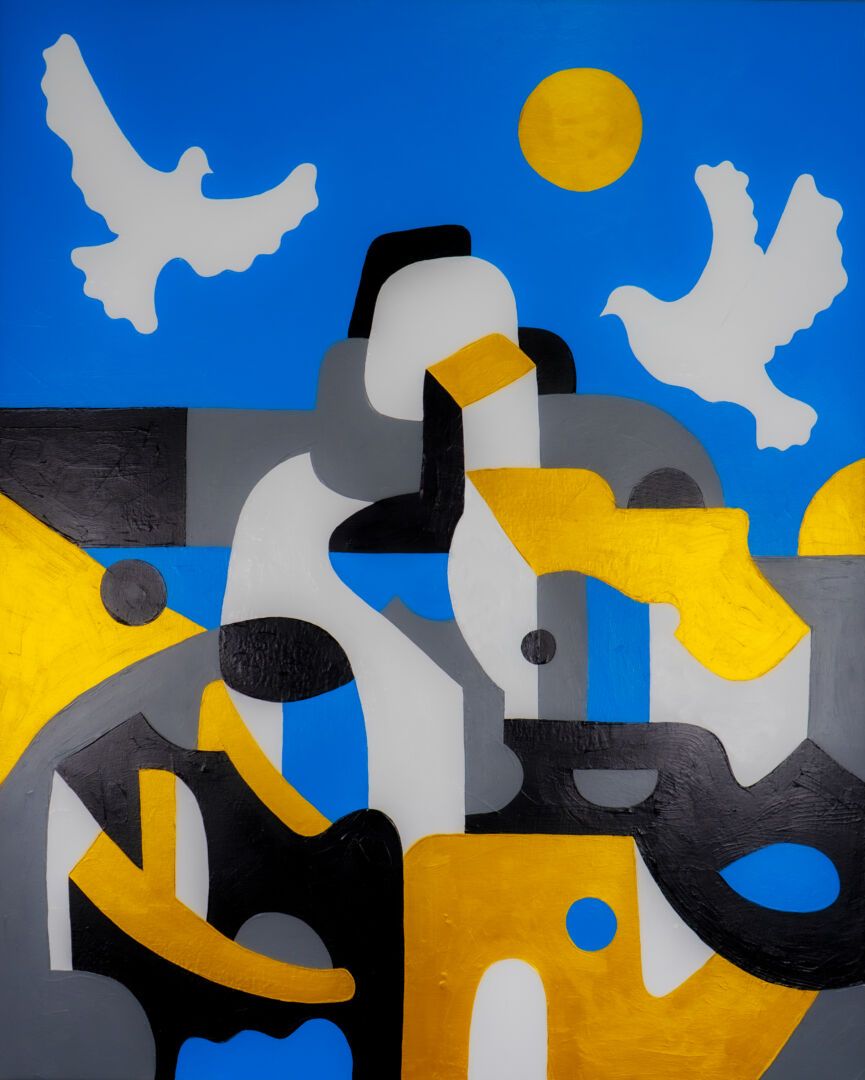
On the last day, the French architect Philippe Fraisse introduced us to the sweet marble sculptor Petros Delotis who welcomed us in his workshop as if it were ours. Finally, I would like to thank Mr. Elias Sigalas from Mountados for all the help he provides to all his artists. Such actions as this small Mountados Biennale can bring a quality and recognition to places like Tinos around the world.
The cover work was created specifically for this issue and is of course dedicated to the island of Tinos. My first thought was to represent the dovecotes that host these noble birds that were vital to the island. These buildings have always fascinated me and it is admirable how a folk architecture with very simple means managed to solve the riddle of beauty.
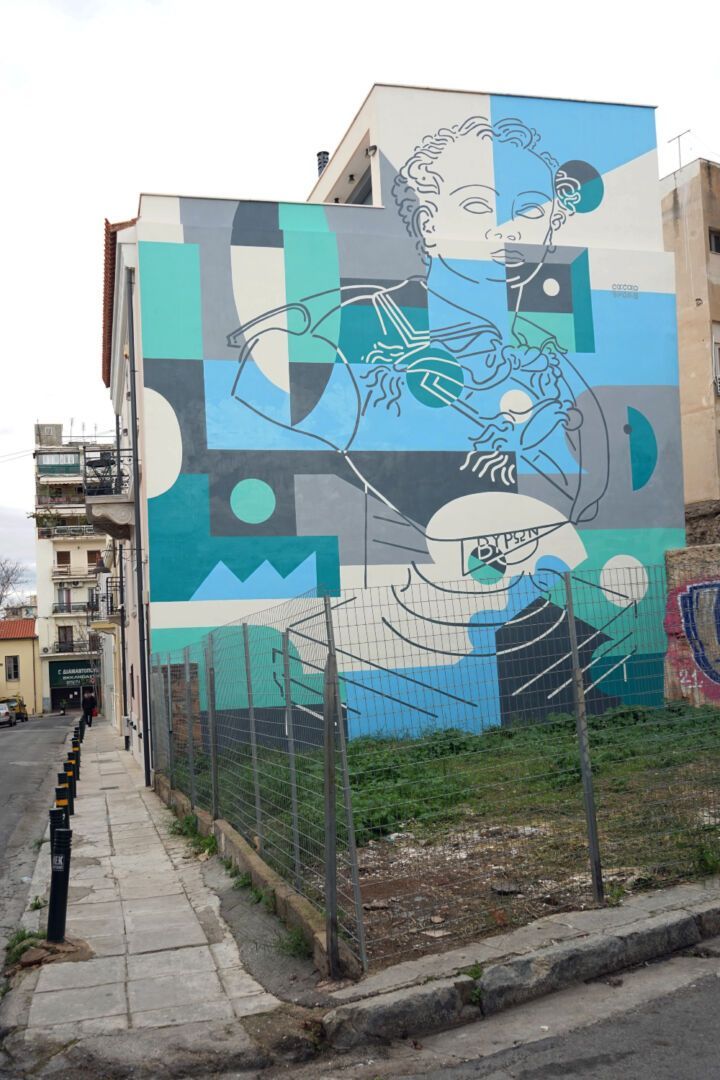
It was hard for me to depict them without becoming a folklore image reminding of a postcard so I decided to start from the pigeons themselves that they symbolize peace, freedom and love.
I made two of them flying facing each other, over an island that I created with indistinct shapes and reminds me of Tinos. Generally my painting is an attempt to continue the modern school of painting of the 20th century with references always to all its “conductors” bringing painting to these days, using new means.”
You can see more of Jason Megoulas’ works of art here.

 Ελληνικά
Ελληνικά 